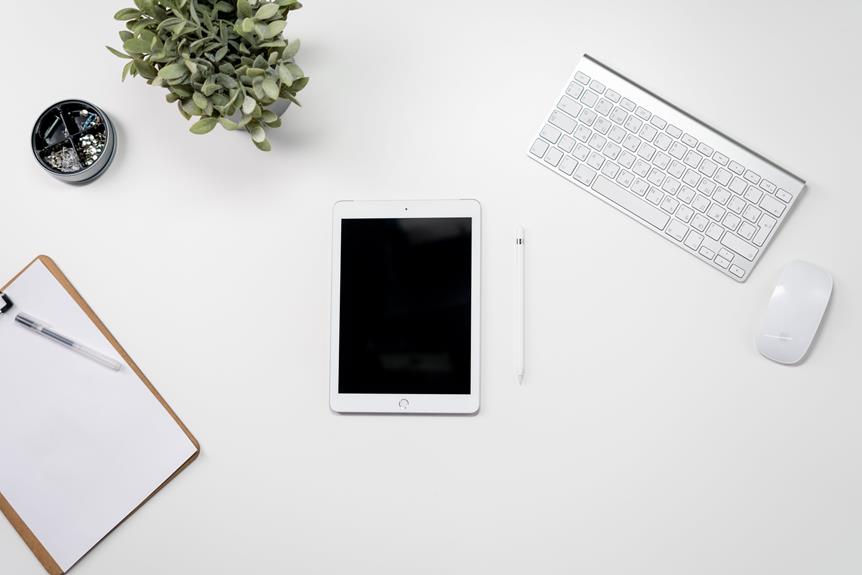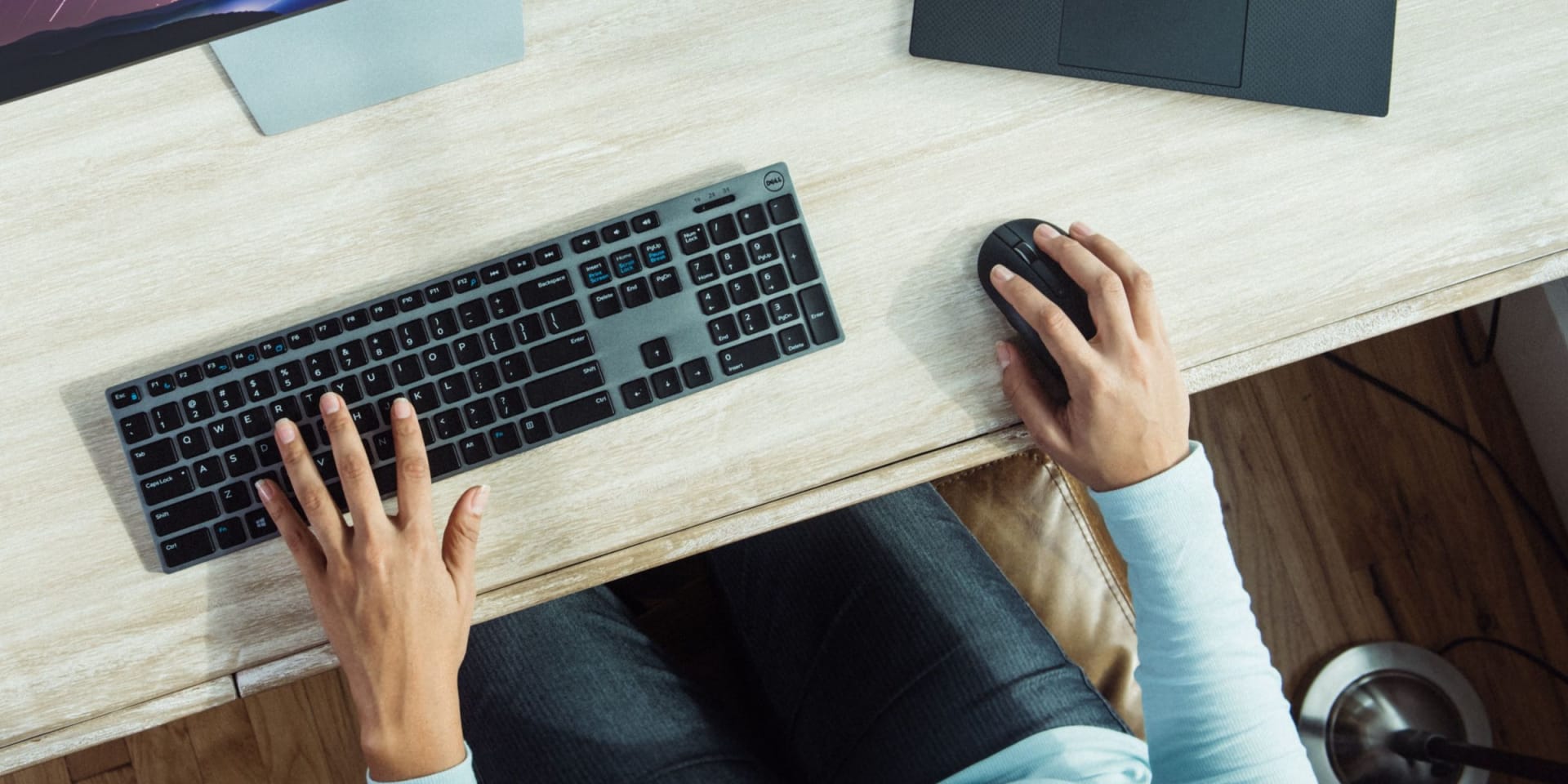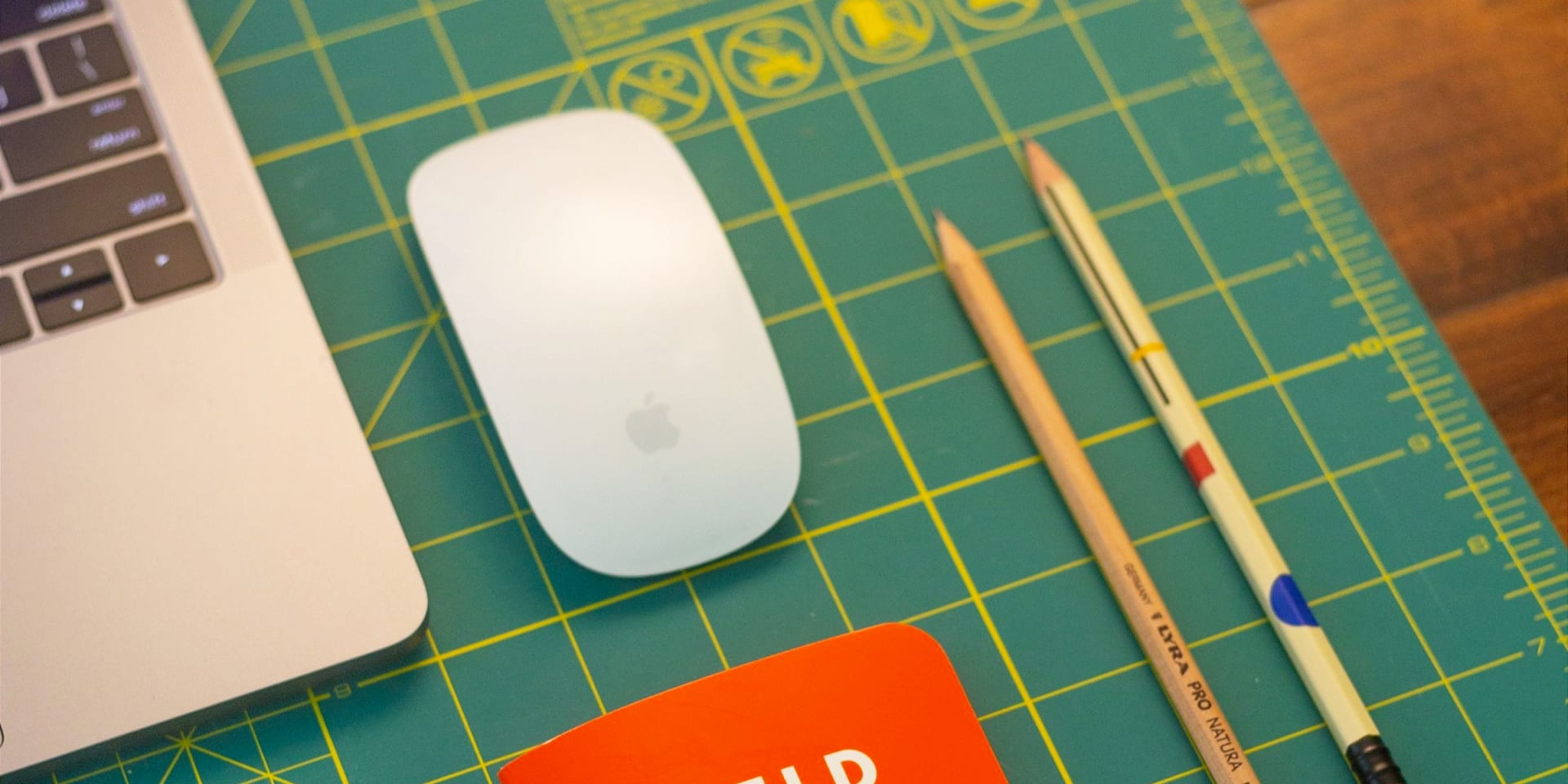Looking to elevate your home office setup without breaking the bank? Need a Mouse Pad for Your Home Office? Try These Makeshift Ideas.
When it comes to optimizing your workspace, sometimes the simplest solutions can be the most effective. Whether you're a seasoned pro or just starting out, finding the right mouse pad can make a world of difference.
Instead of splurging on expensive options, consider these clever makeshift ideas that are both practical and budget-friendly. By making the most of everyday items, you can craft a personalized mouse pad that suits your needs and style.
Let's dive into these creative alternatives and discover the perfect fit for your home office.
Key Takeaways
- Cardboard-based mouse pads provide a quick and inexpensive solution with a firm base and smooth surface for mouse movement.
- Fabric-based mouse pads can be easily made by repurposing old fabric scraps, selecting durable and smooth fabric, and adding optional padding for cushioning.
- Repurposed materials mouse pads, such as magazine mouse pads, offer an environmentally friendly alternative by cutting cardboard to size and gluing colorful magazine pages onto it.
- Sustainable mouse pads, like corkboard mouse pads, provide a natural cushioning and durable surface with a porous texture for precise mouse movements, while also serving as a convenient pinning surface for notes and reminders.
Cardboard and Duct Tape Mouse Pad
If you're in need of a quick and inexpensive solution for a mouse pad, you can easily make one using cardboard and duct tape.
This cardboard and duct tape mouse pad is a clever alternative to traditional mouse pads, and it's a fun DIY project for those looking to add a personal touch to their workspace.
To create this makeshift mouse pad, simply cut a piece of cardboard into your desired shape and size. Then, cover the cardboard with duct tape, ensuring the surface is smooth and free of any bumps or wrinkles.
You can get creative with the duct tape, using different colors and patterns to suit your style.
The sturdy cardboard provides a firm base for your mouse, while the smooth duct tape surface allows for seamless mouse movement.
This cardboard and duct tape mouse pad isn't only functional but also customizable, making it a practical and enjoyable addition to your home office setup.
DIY Fabric Mouse Pad
Consider repurposing an old piece of fabric to create a DIY fabric mouse pad for your home office. If you have fabric scraps lying around, this is a perfect way to put them to use.
Start by selecting a durable and smooth fabric that's at least 8×8 inches in size. You can use old denim, canvas, or even felt for this purpose.
First, trim the fabric to your desired size, ensuring it's large enough for smooth mouse movements.
Next, if you have a sewing machine, you can hem the edges to prevent fraying. If sewing by hand, a simple running stitch along the border will do the trick.
You can also add a layer of thin padding underneath the fabric to provide a bit of cushioning. Just ensure it's not too thick, as this could affect the mouse's tracking.
Once your DIY fabric mouse pad is assembled, place it on your desk and enjoy the smooth and personalized surface it provides for your mouse.
Repurposed Magazine Mouse Pad
To create a repurposed magazine mouse pad, grab a sturdy piece of cardboard and a few old magazines or colorful pages from a catalog. Here's a step-by-step guide to help you craft your own sustainable alternative to a traditional mouse pad:
- Cut the cardboard: Use a pair of scissors to cut the cardboard into your desired mouse pad size. A standard mouse pad is usually around 8.5 inches by 7.5 inches, but feel free to adjust based on your preference.
- Arrange the magazine pages: Select colorful and visually appealing pages from old magazines or catalogs. Cut them to fit the size of the cardboard, ensuring complete coverage.
- Assemble the mouse pad: Once you have the magazine pages ready, use a non-toxic adhesive to carefully glue them onto the cardboard, creating an attractive and functional repurposed magazine mouse pad.
Corkboard Mouse Pad
Looking for a sustainable and versatile alternative to a traditional mouse pad? Consider using a corkboard as a creative workspace solution. Corkboards are an excellent option for a mouse pad due to their natural cushioning and durable surface. The porous nature of cork provides a smooth and responsive texture, ideal for precise mouse movements.
To repurpose a corkboard as a mouse pad, simply obtain a small corkboard square or rectangular piece. Ensure that the corkboard is thick enough to provide ample support and protection for your desk surface. Place the corkboard on your desk, and position it where you typically use your mouse.
The corkboard not only serves as an effective mouse pad but also offers a convenient pinning surface for notes, reminders, and other important documents, adding functionality to your workspace.
Using corkboard alternatives as a mouse pad contributes to a sustainable and eco-friendly home office setup. By incorporating creative workspace solutions like repurposed corkboards, you can enhance your productivity while minimizing waste.
Embrace the versatility of corkboard as a mouse pad and elevate your home office experience with this simple and practical solution.
Vinyl Placemat Mouse Pad
If you're seeking an affordable and versatile alternative to a traditional mouse pad, a vinyl placemat serves as an excellent makeshift option for your home office setup. Here's why it's a great choice:
- Cleaning and maintenance: Vinyl placemats are easy to clean and maintain. Simply wipe them down with a damp cloth or wash them with soap and water. This makes it a practical choice for a mouse pad as it can quickly be restored to its original cleanliness, ensuring a hygienic work environment.
- Ergonomic benefits: Vinyl placemats often provide a smooth surface that allows your mouse to glide effortlessly. Additionally, they can offer a bit of cushioning, which can be easier on your wrist and forearm compared to a hard desk surface. This can contribute to a more comfortable and ergonomic work setup, reducing strain during long hours of computer use.
- Versatility: Vinyl placemats come in a variety of designs and colors, allowing you to personalize your workspace. You can easily switch them out to match your mood or the aesthetic of your home office, adding a touch of style to your workstation.
Frequently Asked Questions
Can I Use a Makeshift Mouse Pad on Any Surface, or Are There Certain Materials That Work Best?
You can use a makeshift mouse pad on any surface, but certain materials work best. Opt for smooth, flat materials like cardboard, hardcover books, or even a piece of paper to ensure the best tracking and responsiveness.
How Long Will a Makeshift Mouse Pad Typically Last Before Needing to Be Replaced?
A makeshift mouse pad's longevity depends on usage and materials used. It can last a few months to a year before needing replacement. Its effectiveness on different surfaces varies, but smooth, flat surfaces tend to work best.
Are There Any Specific Types of Mice That May Not Work Well With Makeshift Mouse Pads?
Specific mouse types, like laser or high-precision optical mice, may have compatibility issues with makeshift pads. Surface materials can affect sensor performance. While makeshift pads are cost-effective, they may not offer the longevity of traditional mouse pads.
Can I Use a Makeshift Mouse Pad for Gaming, or Is It Better Suited for General Office Use?
You can make a makeshift mouse pad for gaming, but consider the pros and cons. Suitable materials include cardboard, cloth, and hardcover books. It may not offer the same precision as a dedicated pad, but it's a budget-friendly option for casual gaming.
Are There Any Potential Drawbacks or Risks to Using Makeshift Mouse Pads, Such as Damage to the Mouse or Desk Surface?
Using makeshift mouse pads may pose potential risks such as mouse and desk damage due to unsuitable surface materials. Longevity of makeshift pads may be compromised, impacting gaming or office use. Consider investing in a proper mouse pad for optimal performance.



